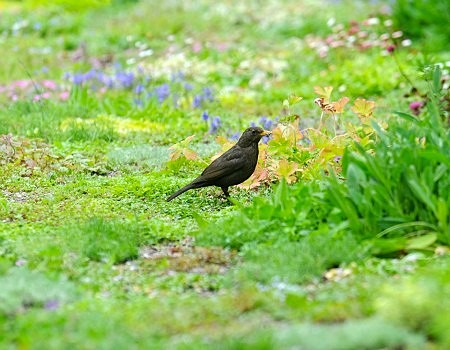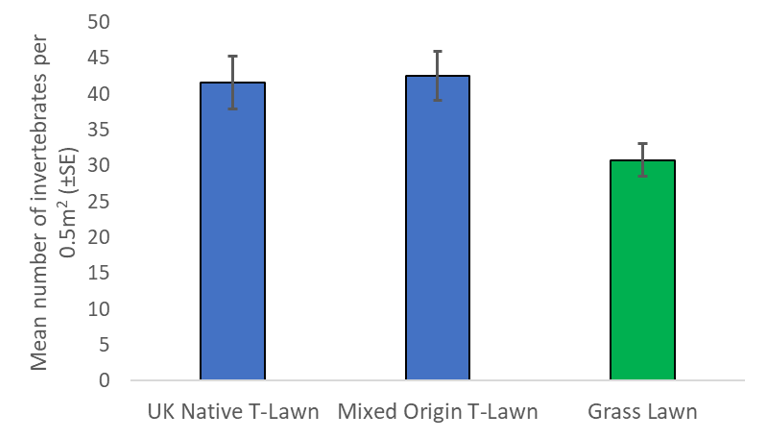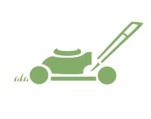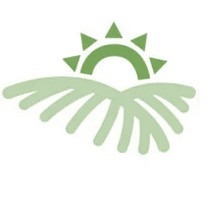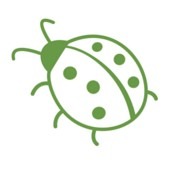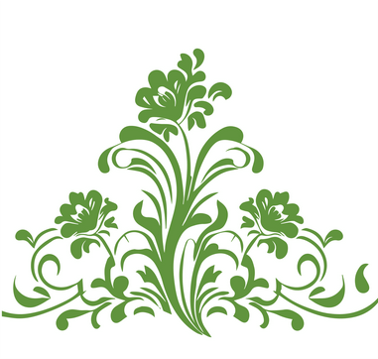Invertebrates are animals without a backbone and make up around 90% of all animals. Lawn invertebrates provide food for many larger vertebrate creatures such as birds and hedgehogs.
Despite the disturbance created by mowing, lawns can be home to a variety of invertebrates, such as aphids, beetles, flies, ants and many more.
The less a lawn is disturbed by mowing, the more invertebrates that can be found there.
Tapestry lawns tend to be mown between approx. 5–8 times per year depending on the age and composition of the lawn, Britain's wonderful weather, and local soil fertility. This compares favourably to over 20 to 30 cuts per year for grass lawns.
Less mowing can mean fewer CO₂ emissions. Combined with no added fertiliser or other lawn treatments such as broadleaf weedkillers, T-lawns are much less energy and chemistry dependent.
The study undertaken to look at invertebrates in lawns revealed that T-lawns supported more invertebrates than grass lawns (see below), and although both T and grass lawns share many invertebrate families that there are some distinct differences.
Increasing overall invertebrate diversity in the garden is generally considered to be a very good thing.

